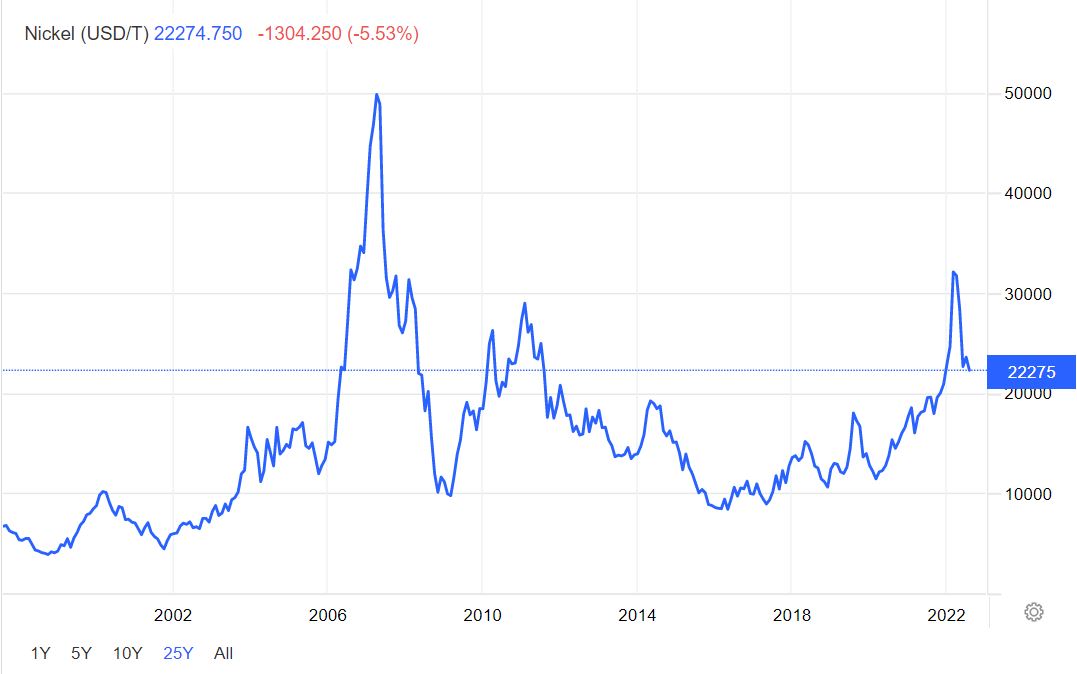The ISM Manufacturing Index (PMI) decreased slightly in July, down to 52.8 from June’s 53 mark. The new order rate contracted, supplier deliveries showed improvement, and prices began to ease. The pricing component is the big takeaway in the report, suggesting that inflation may have peaked. While most respondents believed that conditions will remain positive, a growing number commented that they are taking a cautious approach.
July’s Consumer Confidence reading limped to a 95.7 mark, receding from June’s 98.4. This marks the third consecutive month that the index has declined. Persistent concerns regarding inflation, particularly gas and food prices, have weighed on consumers. Interest rate hikes and inflation look poised to keep a check on spending and growth in the next few months.
WTI Oil continued to deteriorate, falling from $108.43 per barrel on July 1st to $98.62 per barrel on July 29th. Global manufacturing figures point to a slight slow down, but that doesn’t necessarily mean a drop in oil prices. With the supply side remaining at a below-average position and demand holding up relatively well, current pricing levels look to stay (i.e. above $90/barrel).
The online US Oil Rig Count is at 767 which is up 17 compared to last month’s report and up 279 from July 30 of 2021 (a high of 1609 in October of 2014 before oil pricing dropped below $20 per barrel at the end of that year). This key and leading indicator shows the current demand for products used in drilling, completing, producing, and processing of hydrocarbons which all of us use every day as fuel sources and finished products.
July saw Nickel continue its slide in price from the highs in March, closing the month at $10.75/lb. With an average value of $9.74/lb., July was the cheapest month of 2022. While it is possible that the market has corrected after March’s price debacle, it is worth noting that trading volume on the LME declined 21% from Q1 to Q2. This may indicate that the LME is not as accurate in detailing price and demand as it was.
Below is the 90 day Nickel Price Trend (US$ per tonne).

Domestic steel mills announced at the end of July that they would be implementing a $.06/lb. price DECREASE. Yes, you read that correctly.
Commodity stainless and Duplex plate deliveries remain in the 8 to 12 week range, while Nickel alloy plates range from 11 to 26 weeks. Carbon Steel plate mill deliveries reside in the 6 to 10 week delivery range.
Welded tubing –Stainless strip supply has plateaued, keeping many deliveries in the 10 to 16 week range, with larger quantity orders still in the window of 18 to 25 weeks. Carbon steel tubing deliveries have lead times ranging anywhere from 12 to 20 weeks when strip is available. Welded nickel alloy tubing ranges from 16 to 26 weeks, with some cases of 30 week deliveries.
Seamless tubing – Current schedules reflect 8 to 22 weeks or more for carbon steel (26 to 30 weeks for Western European carbon seamless) and 8 to 30 weeks for stainless. Seamless nickel tubing is being offered at the 10 to 12 week delivery window so long as hollows are in stock. If hollows are not readily available, anticipate deliveries of seamless nickel tubing in the 20 to 32 week timeframe.
The metal market is still in a tremendous state of uncertainty and price volatility, so please don’t hesitate to reach out if you have any questions.
Here’s the current surcharge chart for 304/304LSS, 316/316LSS, 2205, C276, and 625.

Nickel Prices have had an interesting ride over the past two decades with a low of $2.20/lb. in October of 2001 (following September 11 events) and a high of $23.72/lb. in May of 2007. Surcharges trail Nickel prices by approximately two months, so they would have been at their lowest in December of 2001 (304 was $0.0182/lb.) with the peak in July of 2007 (304 was $2.2839/lb.).
The chart below illustrates Nickel price by way of U.S. Dollar per Metric ton.








